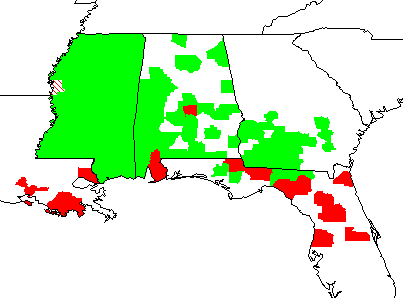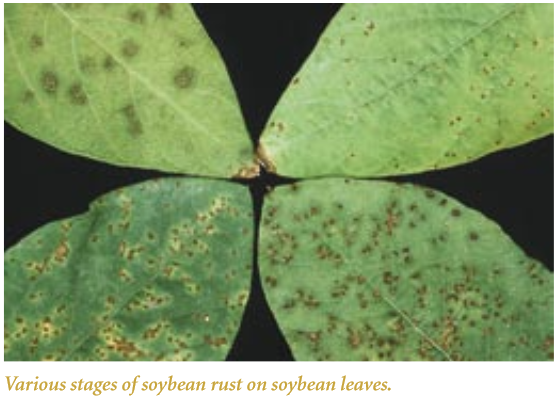Soybean Rust is Around but Not on Soybeans
Since its arrival in the United States in 2004, soybean rust has developed into more of a problem in the southeastern U.S, than in other areas of the country. To monitor disease prevalence and spread, soybean rust sentinel plots have been established throughout the southeastern U.S., where the disease has caused the most damage. It is generally widely distributed in the spring after mild winters that allow for its overwintering host, kudzu, to survive. Then, often times, strong storms spread the spores during the growing season. Since 2004 the disease has been found as far north as Erie, Canada, but usually when it gets beyond Tennessee it is late enough in the season that yields are not reduced.
This year we had a cold snap in January (below 20 F in many areas) that killed the kudzu, and thus far, we have not had any major storms to spread the spores we do have. Still, soybean rust has been found on kudzu in 12 counties in Florida so far this year, but none of the soybean sentinel plots have become infected yet. If soybeans were planted in the spring they are probably at R5 or beyond now, and even if they do get infected there will be no reduction in yield. If soybeans were planted late, or were double-cropped they may still be in vegetative growth stages and need to be monitored closely.
Although several Florida counties adjacent to Georgia have soybean rust, none has been found in Georgia this year. Alabama has several counties with rust, and one soybean sentinel plot there was found to be infected early in August. Mississippi also has not found any soybean rust yet this year. So far it looks like the disease is most wide spread on kudzu in coastal Louisiana (where apparently it survived even though the kudzu was killed by a winter cold spell) and central and north Florida. The red counties in the map above were positive for soybean rust as of August 20, 2014.
Overall, it looks like soybean rust is not going to be much of a problem for most soybean growers this year. This is in contrast to 2013 when soybean rust was found in 408 counties and 13 states. The public website for monitoring the progress of soybean rust is http://sbrusa.net/cgi-bin/sbr/public.cgi.
With all that said, however, the tropics (as of August 20) have a low pressure area off the Windward Islands. Some models predict it may enter the Gulf of Mexico over the weekend. If it does, things could quickly change. It is believed that soybean rust has been spread long distances by major tropical storms.
For information on management and control of Soybean Rust and other disease of soybeans, download the: 2014 Georgia Soybean Disease Guide
- Reducing Water Demand for Agriculture - June 12, 2015
- Crop Rotation May Determine the Profitability of Peanuts in 2015 - January 30, 2015
- Soybean Rust Update - August 22, 2014


